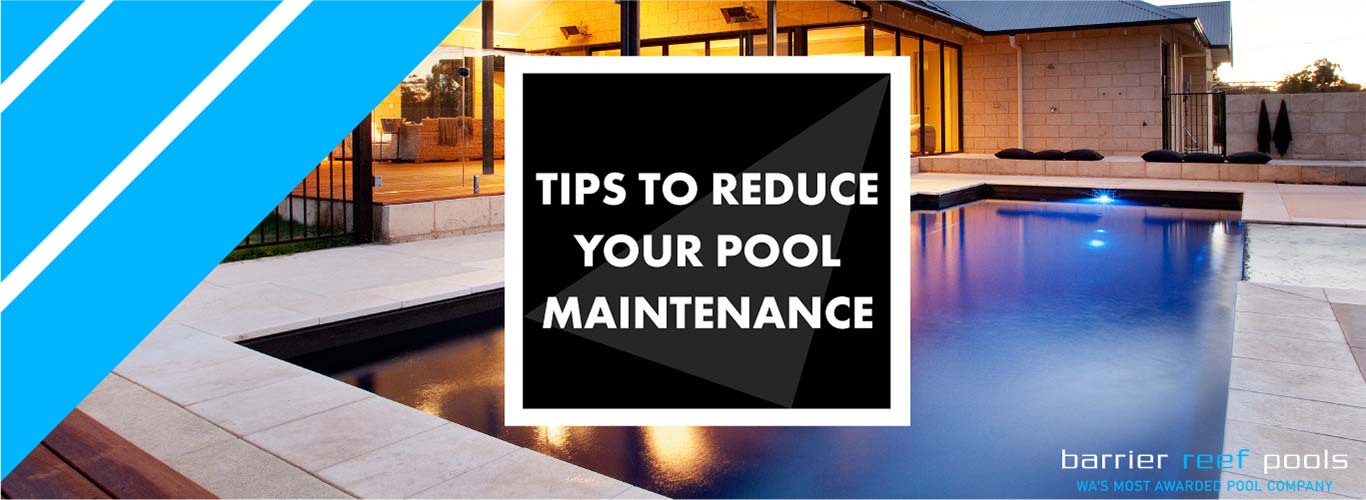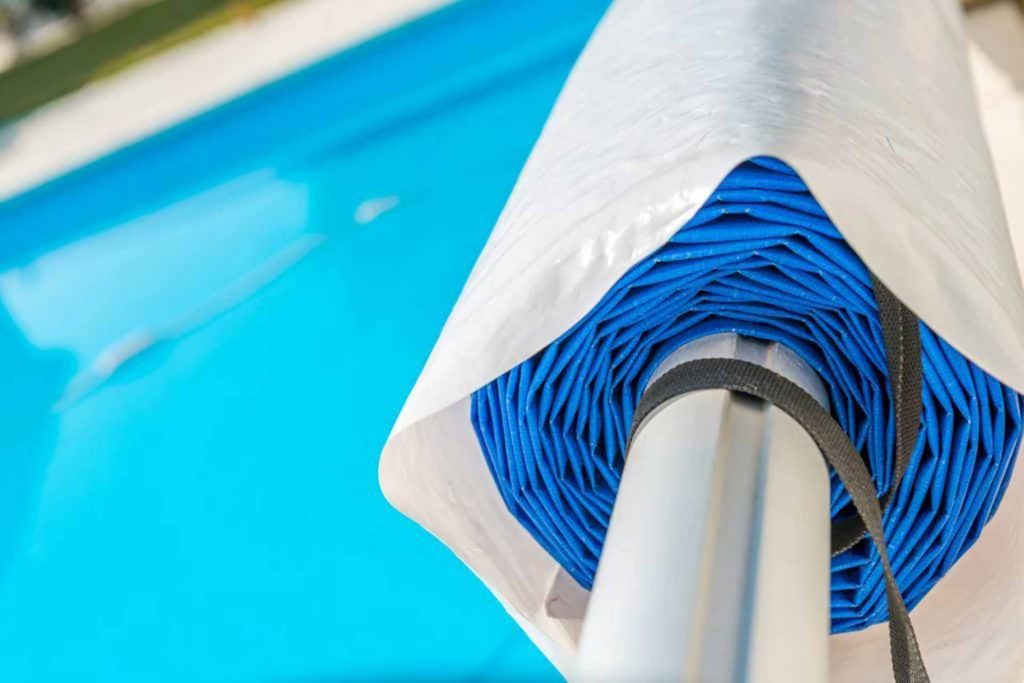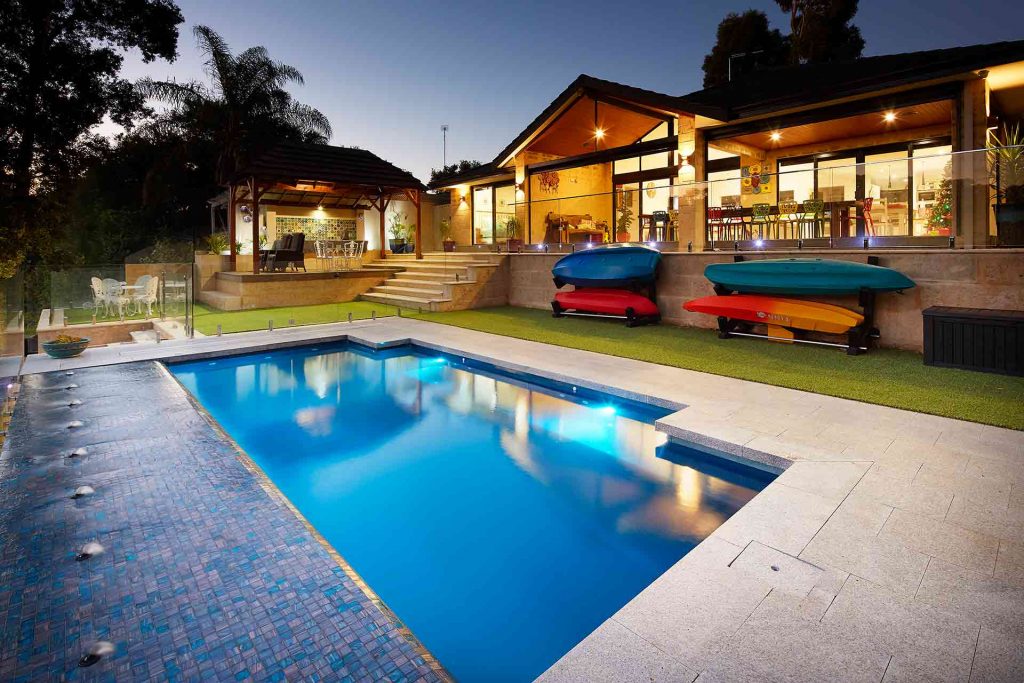Your swimming pool’s accumulated maintenance cost is higher than the figure you had in mind since the weekly and monthly costs may not be huge. Typical monthly maintenance will include the following categories of services:
- Analysis of water to provide chemical balancing.
- Backwash filters.
- Pump baskets and skimmer cleaning.
- Auto pool cleaner bag washing.
- Brushing the walls of the pool.
- Skimming the surface of the pool.
- Vacuuming the pool.
- Winterizing the pool.
- Opening the pool for spring.

Typical Maintenance Costs
The average maintenance cost for a normal-sized swimming pool per month falls in the range of AUD110 and AUD210. If we calculate the annual aggregate cost based on this estimate, it will be between $1320 and $2520. In the case of a new swimming pool, the service charges for first time cleaning can be anywhere between $210 and $480.
How Much Does A Pool Owner Spend Annually?
Swimming pool maintenance costs depend on poll sizes, types, and classifications. Customarily a fiberglass swimming pool costs less to maintain for all periodic services, namely weekly, monthly, annually, and seasonal openings. The following services are accounted for to calculate annual costs:
- Maintenance
- Repairs
- Electricity
- Water
Besides the above, seasonal closings and openings shall cost about AUD400 to AUD680.
Technology to Lower Energy Costs
Energy bills can be considerably decreased by following certain best practices for conserving electricity.
Windbreakers To Prevent Evaporation: Wind plays a major role in evaporating pool water that requires constant replenishing resulting in electricity use. The water in the pool is sanitized and heated, so when you add water to supplement for evaporated water, it adds to the cost of these two utility services. Stopping the wind will reduce evaporation and expenses incurred on sanitizing and heating. Erecting a ready made hedge is a great solution to stop the wind. It will enhance the beauty of your pool environment and increases privacy.
Variable Speed Pumps To Replace Single-Speed Pumps: A variable speed pump uses much less energy than conventional pumps. It can save up to $400 every year when compared to using a single-speed pump. It works in favor of the environment by emitting much less greenhouse gas.
Pool Covers: Pool covers are used to achieve two things:
- Cleanliness
- Safety
It has another hidden feature- prevention of heat transmission. Using a quality pool cover will drastically reduce heating expenses by an unbelievable rate of 70%. Another way a pool cover saves on energy spending is by reducing evaporation rates by about 50%. This has a direct effect on the use of chemicals which gets cut down by 60%.
Tip: A solar cover is much cheaper than an automatic cover and saves on electricity too.

Large Water Filters: All filters have the same job- filter the water that is pumped into the pool. But size matters. Small filters require higher pressure levels to do their jobs. A large filter has more surface area. This feature permits pumping at less pressure. This means that a larger filter produces small electricity bills. Money can be saved on pump replacement costs as a large filter will last longer.
The Plumbing Design: Effortless flow of water through the plumbing system reduces electricity expenses considerably. The following flaws in plumbing will add to your electricity costs:
- Intense directional shifts.
- Inadequate size of pipes that carry water.
Enabling the best hydraulics practices shall bring down electricity costs substantially as it will cause water to move effortlessly through the plumbing systems.
Tip: Avoiding tight corners by designing wide sweeps in the layout greatly enhances free water movement.
Advanced Sanitation Systems: A factor that adds to pool maintenance costs is the quality of purifiers used in the sanitation process. The Latest technologies provide for state-of-the-art equipment that uses much fewer chemicals. An excellent example is salt generators that can turn out chlorine on the pool premises. If your pool has a salt generator it effectively does away with the requirement for any other chemicals. Other advanced appliances include UV ozone systems and ozone systems. They use very little chlorine when compared to conventional systems.
Sunlight Absorbing Colours: Dark colors absorb more heat from the sun. This will considerably reduce the costs of heating your pool. If you select a long-life pool finish, it will result in lower maintenance expenses.
Energy-Efficient Heaters: A pool owner can save 30 to 35 percentages of annual heating expenses by using highly efficient pool heaters. Traditional gas heaters display an energy-efficient level of 65%, whereas advanced heaters provide 95% efficiency.
Tip: Solar water heaters and heat pumps are much more efficient—they best suit pools situated in warmer climates.
LED Lighting: Energy consuming illuminating systems that use incandescent fixtures eat up a lot of electricity. The use of LED lights has the following advantages:
- They last three times longer than standard bulbs.
- The savings on operating costs are up to 80%.
Automated Pools: Technological advances have ushered in smart automation along with fiberglass that will also lower maintenance expenses. These systems will run pool pumps and other accessories that use electricity only at those hours when power rates fall in the lowest ranges. Advanced automation technology has pieces of equipment that have the following advantages:
- They automatically regulate the swimming pool’s systems like purification and filtration to achieve higher efficiency levels.
- They can be accessed from smartphones.

The Best Maintenance Practices That Reduce Costs
Being aware of the minimum standards and the use of maintenance tools will greatly equip a pool owner to cut down on expenses. Here are a few examples of smart maintenance techniques.
Chemistry of a Swimming Pool
Buy a good water testing kit to know the appropriate use of chemicals when required by water conditions. You can know the following characteristics of water using your testing kit:
Alkaline levels: The conventional levels of pH for a swimming pool lie in the range of 100 and 150 ppm.
Sanitizer: Toxic presence of malignant microorganisms requires the correct use of chemicals like bromine or chlorine.
pH levels: The acidic level of pool water should be in the ideal range of 7.4 and 7.6 pH.
Experienced pool owners suggest testing your water every week. Get your water tested every month by professionals for accurate results. This will also help you to determine the reliability of your testing kit.
Smart Hacks To Keep Your Pool Clean
Tennis Balls: Oils from substances from the body of users like suntan, sunscreen, conditioners, etc. build up all around the waterline. They can also clog the water filters. Tennis balls contain natural fibers that are great absorbents. Throwing in a few balls into the water or inside the skimmer basket will take care of oil slicks in your pool.
Tip: Replace the balls when they wear out.
Nurture A Clean Deck: Sweep the deck at least twice every week. Scrub all the grim and spores on the deck using a standard pool deck cleaner once every month depending upon use.
Use Of Swimming Suits: Never enter your pool wearing street clothes to prevent the entry of contaminants accumulated on the clothes from outside into the pool.
Tip: Wash swimsuits after every use and wear only properly dried suits.
A fiberglass pool has the advantage of ease of cleaning that has a huge bearing on reduced maintenance expenses.


